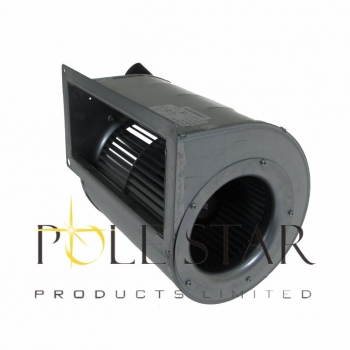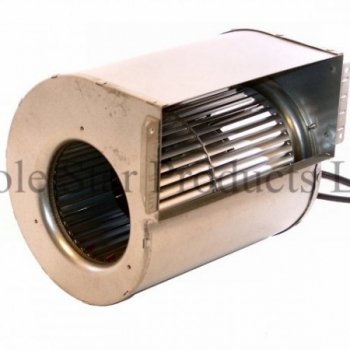EC Centrifugal Blowers
 Along with other ranges such as the 84range and fan coil motors our Centrifugal blowers have also had some developments with energy efficiency. Our Electronically Commutated Motors (ECM or EC motors) are now being fitted to our blower units.
Along with other ranges such as the 84range and fan coil motors our Centrifugal blowers have also had some developments with energy efficiency. Our Electronically Commutated Motors (ECM or EC motors) are now being fitted to our blower units.
Currently the range is quite small with only one model being stocked but this will increase swiftly over time.
These brushed DC motors develop a maximum torque when stationary, decreasing as velocity increases. Some limitations of brushed motors can be overcome by BLDC motors; they include higher efficiency and a lower susceptibility of the commutator assembly to mechanical wear. These benefits come at the cost of potentially less rugged, more complex, and more expensive control electronics.
An electronic controller replaces the brush assembly of the brushed DC motor, which continually switches the phase to the windings to keep the motor turning. The controller performs similar timed power distribution by using a solid-state circuit rather than the brush/commutator system.
Brushless motors offer several advantages over brushed DC motors, including more torque per watt (increased efficiency), increased reliability, reduced noise, longer lifetime (no brush and commutator erosion), elimination of ionizing sparks from the commutator, and overall reduction of electromagnetic interference (EMI). With no windings on the rotor, they are not subjected to centrifugal forces, and because the windings are supported by the housing, they can be cooled by conduction, requiring no airflow inside the motor for cooling. This in turn means that the motor’s internals can be entirely enclosed and protected from dirt or other foreign matter.
Brushless motors are more efficient at converting electricity into mechanical power than brushed motors. This improvement is largely due to the brushless motor’s velocity being determined by the frequency at which the electricity is switched, not the voltage. Additional gains are due to the absence of brushes, alleviating loss due to friction.




